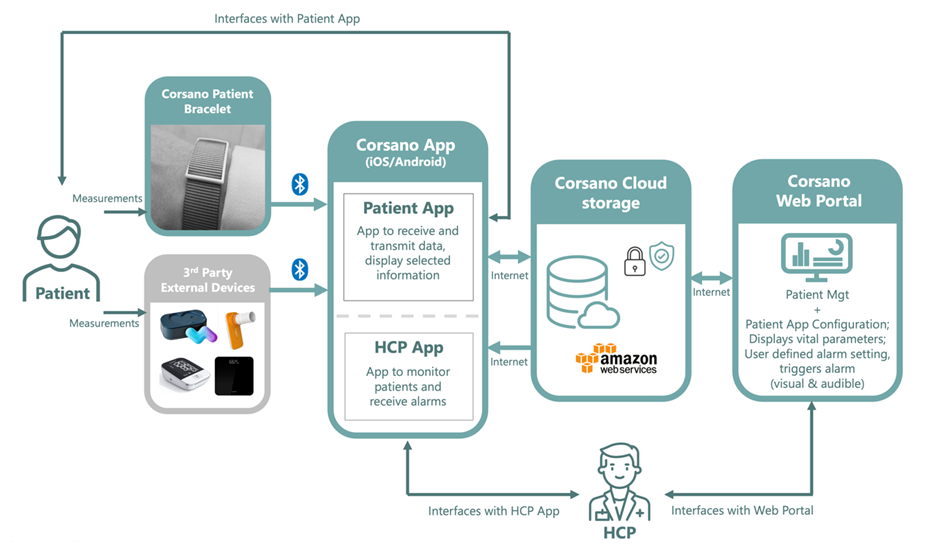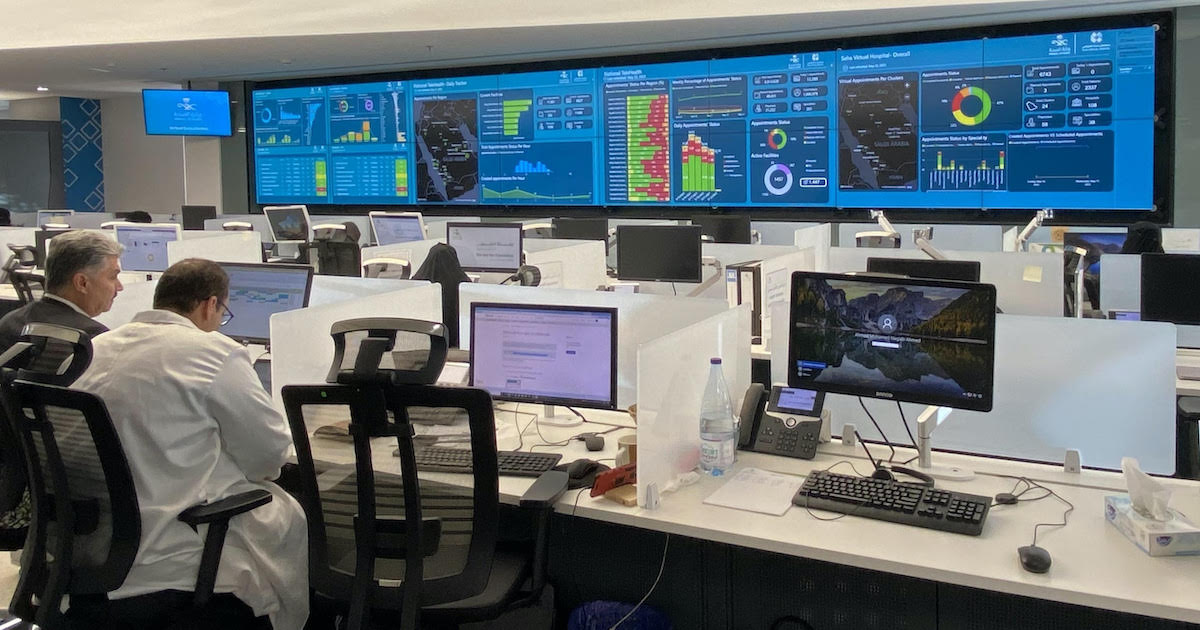
Helsinki Children’s Hospital, a state-of-the-art facility that serves sick children from all over Finland, opened earlier this year with a price tag of €170 million, replacing an outdated facility from 1948.
 The building is a case study in patient-centered design and also includes a number of process innovations and digital technologies (including an iPad in each patient room). Along with a small group of other journalists, MobiHealthNews had the opportunity this fall to tour the facility, guided by HUS Head of Digital and Innovation Services Pekka Lahdenne.
The building is a case study in patient-centered design and also includes a number of process innovations and digital technologies (including an iPad in each patient room). Along with a small group of other journalists, MobiHealthNews had the opportunity this fall to tour the facility, guided by HUS Head of Digital and Innovation Services Pekka Lahdenne.
“Before and during the planning period … what we were aiming to produce was high quality and safe medical care, excellent patient experience, and excellent process efficiency,” Lahdenne said. “We are not trying to produce high-quality medical care at any cost. We cannot really be proud of our high-quality results if they are not cost-effective or if they are not producing very good patient experiences. So this triangle was really taken into consideration strongly at every step of the planning process.”
 The hospital has a daunting charge. As the flagship pediatric hospital in Finland’s mostly-public healthcare system, they are responsible for the routine care of children in the Helsinki metro area, which encompasses about a third of Finland’s population of 5 million. They are also responsible for many areas of specialty care for children throughout the country.
The hospital has a daunting charge. As the flagship pediatric hospital in Finland’s mostly-public healthcare system, they are responsible for the routine care of children in the Helsinki metro area, which encompasses about a third of Finland’s population of 5 million. They are also responsible for many areas of specialty care for children throughout the country.
“We are quite a big children’s hospital because we cover not only this tertiary care, but we also act as a secondary care children’s hospital for the whole Helsinki area and surrounding municipalities,” Lahdenne said. “And that’s why we have almost 150,000 outpatient patients a year, almost 60,000 emergency care and so on.”
Read on for a virtual tour of the hospital.

The first thing one notices walking into the hospital lobby is the giant virtual fishtank on the wall. It’s striking on its own, but if you watch it carefully you’ll notice some strange fish, perhaps bearing crayon-scrawled Finnish names.

The wall-sized screen is actually an interactive exhibition connected to a crafts area one level up, behind the hospital’s café. Children can grab a paper fish, color it in however they like, then slide the picture into a wooden box and hit a button. A few minutes later, their fish will show up and join the others swimming around the virtual reef, animated in 3D.

“We really wanted to prioritize the child and family experience, and give them a lot of interesting things to wonder and to memorize, so that after they get home they wouldn’t remember the ugly things, like taking blood tests or whatever, but they would have memories of stuff like this,” Lahdenne said.
The fish also play into a larger design theme of the hospital.
“The architects’s story of this building comes from the Finnish nature and archipelago, and the names of the floors come from there,” Lahdenne explained. “So this floor [the second floor] is beach, the downstairs floor is sea, and then we have jungle, woods, valley, mountain and space. So it comes from the bottom of the sea, and up to space.”

The second thing to notice are the quotes and graphics that pervade the space. These might be unfamiliar to American eyes, but elsewhere in the world they’re instantly recognizable as the art and writing of Tove Jansson, creator of Finland’s beloved Moomins. Images and lines from Jansson’s book are all over the walls, floors, and ceilings of the hospital.
 “This Moomin Characters Company, they donated the rights to use these graphics, which are worth 700,000 euros,” Lahdenne said. “Which is very nice because, as I said, one of our priorities was to get a hospital for children that they would not be scared in. And these entertaining elements make this hospital a healing environment.
“This Moomin Characters Company, they donated the rights to use these graphics, which are worth 700,000 euros,” Lahdenne said. “Which is very nice because, as I said, one of our priorities was to get a hospital for children that they would not be scared in. And these entertaining elements make this hospital a healing environment.
"Architects are always talking about healing environments and what I’ve learned is that they usually mean like green trees outside. And new hospitals are very often built on open fields so the healing environment is nature around the hospital. In the middle of the city there are no such open fields, but we can have this healing environment inside in the midst of these play and childhood elements.”
The Moomin characters themselves are used sparingly in the art, with more focus on the environments, which play into the multi-floor design theme.
“We didn’t want this hospital to be a Moomin Hospital,” Lahdenne said. “We have some Moomin amusement parks in Finland, so we didn’t want that.”


Throughout the hospital, patient experience was the driver for most design decisions. Each floor contains three outdoor balconies where patients and families, or even staff, can go to relax.
“Generally we have this planning principal that all the rooms with window views would be reserved for patients and families,” Lahdenne said. “It really was a decision to be made when we had this planning. The offices, technical and the storage rooms, they are in the middle. And patients have this kind of view, which I would say is very much a healing view.”

Another design decision made in the name of patient experience was the inclusion of open nursing stations.
 “One of the reasons for those open nursing stations was we wanted the nurses to talk to the patient,” Lahdenne said. “In the old office they easily went to the back office and shut the door. So the families had to knock and say ‘Can I talk to you?’ We wanted it to be open and accessible.”
“One of the reasons for those open nursing stations was we wanted the nurses to talk to the patient,” Lahdenne said. “In the old office they easily went to the back office and shut the door. So the families had to knock and say ‘Can I talk to you?’ We wanted it to be open and accessible.”
Other, less visible, design decisions were motivated by other parts of the triple aim. For instance, the hospital eliminated storage warehouses on each floor. Instead, surplus beds and medical devices are kept in a storage elevator which can move to any floor.
“The business case showed us that not only could we decrease the storage square meters needed at the wards, but we could also decrease the number of medical devices needed because in the old hospital or in the traditional way of storage thinking every unit has to have its own storage space, and devices,” Lahdenne said. “So now we were able to put all the devices in one storage elevator and they are available for any unit.”


In a program that’s still being developed, Helsinki Children’s Hospital uses RFID tags to track the movement of doctors, nurses, children and families throughout the hospital. US-based Stanley Healthcare is the technology partner. The goal is to collect data that can improve efficiency as well as to make it easy to find nurses or specialists when they’re needed.
“For example, the family can get information through this system where their child is during an operation,” Lahdenne said. “If an operation is being done, usually the family is very nervous to know when the procedure is done and when the child will be transferred to the recovery room. We will show the situation of the child on the screens, again improving our service to the families and decreasing the role that the nursing staff so far has been forced to do, answering telephones and discussing with families when the child is done in the operating room.”
To protect patient privacy, the hospital has adopted a digital system that fits in with the whimsy of the facility’s overall design. When children check in, they can select an animal avatar at a kiosk. Their avatar shows up on screens outside their room to let the family know where to go and is used in other parts of the digital system in lieu of identifying information.

One issue that’s still being worked out is how to implement it in a way that respects staff’s privacy.
“What we are planning to do to start with in a couple of weeks is they won’t have personal tags, they’ll have tags that say a nurse is here, here is an oncologist or a physical therapist,” Lahdenne said. “We are not really interested in anyone’s personal steps.”
Getting buy-in from the staff is important to realize the benefit of the intervention
“These new digital systems, if we implement them, the benefits come from the fact that they are used extensively,” he said. “If they will be used only partially, we don’t get the benefits. We only get the costs.”

Patient rooms in the new hospital are a step up from the old one in several ways. Most rooms in the hospital are single-patient and facilitate a parent staying at a child’s side continuously. Each room has its own bathroom and even a minibar, which is a deceptively beneficial innovation.
“We have provided every room with a minibar so whenever a family comes there are the drinks in the minibar and they keep cold,” Lahdenne said. “So we improved the service but at the same time we decreased the work of the nursing staff. Many of our items when we planned this hospital were like that.”
 Perhaps the most innovative aspect of the patient room, however, is a multipurpose iPad in each room.
Perhaps the most innovative aspect of the patient room, however, is a multipurpose iPad in each room.
From the tablet, children can access “information like when the cafe is open, when there will be visiting artists coming to present something to children,” said Lahdenne. “Not only that, the patients can play games, watch movies and see television. And it also helps the staff to communicate with the family. And we are actually planning that we can even get remote consultation with our specialist coming through the tablet where there is the child and family. That is something we believe will give us benefits in terms of cost and experience.”
On the wall of the room is a special round light that can only be controlled from an app on the iPad. Children can change the colors of the light and activate colorful patterns.
“The thinking was once a child is in a hospital, she or he is pretty much out of control, with all the needles and all the lines.” Lahdenne said. “But we wanted to give the child something to control. And now he or she can control the light. Whatever he or she wants. During night it might become very interesting to see from outside which kind of light the children choose."

Editor's note: This story was reported in Helsinki, Finland, on a trip paid for by Helsinki Marketing, a company owned by the City of Helsinki, which covered airfare and lodging for reporters. As always, MobiHealthNews maintains its editorial independence and made no promises to Helsinki Marketing about the content or quantity of coverage.


